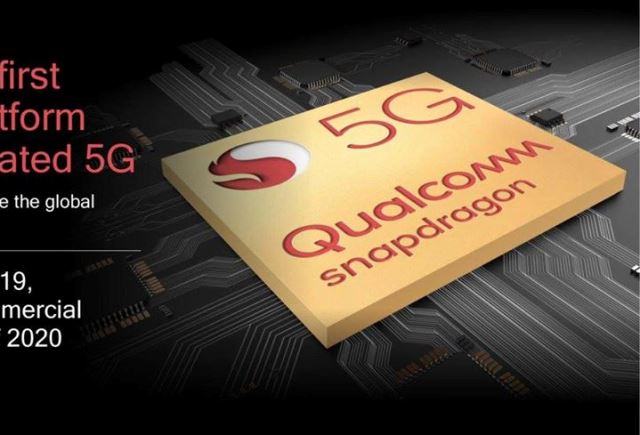Qualcomm, the leading chipmaker, said revenue rose 43 percent to $9.32 billion for the quarter ended Sept. 26.
 Qualcomm’s chip segment had fourth quarter revenues of $7.73 billion.
Qualcomm’s chip segment had fourth quarter revenues of $7.73 billion.
Qualcomm generated $4.686 billion from handsets, $1.237 billion from RF front-end, $270 million from Automotive and $1.54 billion from IoT in Q4.
Qualcomm generated $16.83 billion from handsets, $4.158 billion from RF front-end, $975 million from Automotive and $5.056 billion from IoT in fiscal 2021.
5G as wireless fiber is a reality in gaining scale. Verizon recently announced 5G home Internet service availability in 57 markets, including more than 2 million households covered on millimeter wave in the United States.
In addition, T-Mobile is leveraging their 5G network to target 7 million to 8 million home broadband customers over the next 5 years. “We’re seeing demand increase globally, making 5G as wireless fiber one of the fastest-growing last-mile broadband technologies,” Cristiano Amon, President and CEO of Qualcomm, said.
In fiscal Q4, devices announced or shipped with Qualcomm Snapdragon premium tier products rose by 21 percent year-over-year. Qualcomm said all leading 5G Android smartphones OEMs power their flagship devices with Snapdragon.
Qualcomm’s licensing business achieved revenues of $6.3 billion. QTL remains the most successful licensing business in the industry, reflecting the strength of innovation in cellular technology, the value of patent portfolio and execution in securing long-term agreements with key OEMs as well as over 150 5G agreements to date.
Guidance
Qualcomm is narrowing the range for 5G handsets to 500 million to 550 million units for calendar 2021. It is now forecasting mid- to high-single-digit growth in global 3G/4G/5G handsets relative to calendar 2020.
Qualcomm is forecasting revenues of $10 billion to $10.8 billion for the first fiscal quarter. QCT revenues will be $8.4 billion to $8.9 billion and EBT margins of 32 percent to 34 percent in Q1. The sequential revenue growth is driven by handsets due to higher demand, primarily for our Snapdragon chipsets in Android devices.
Strategies
The San Diego company, the biggest supplier of chips for mobile phones, has worked to diversify its chip portfolio. Its optimistic forecast came even as smartphone makers such as Apple have been struggling with supply chain issues and reporting uneven results, Reuters reported.
Those global snarls have benefited Qualcomm because they have forced profit-hungry phone makers to focus their limited supplies on their most lucrative premium handsets, the market segment where Qualcomm is strongest.
Qualcomm has benefited from Huawei Technologies’ exit from the smart phone market. Huawei’s Android phones had used proprietary chips, but many of the handsets replacing them use Qualcomm’s chips.
The upbeat forecast could signal the easing of a global chip shortage that has hit production for a number of major Qualcomm customers, including Apple and Samsung Electronics.
Qualcomm has worked to diversify its chip manufacturing partners. It is one of few chip designers that uses both Samsung Electronics and Taiwan Semiconductor Manufacturing (TSMC) to make dueling versions of its chips. For older technologies it works with a network of suppliers including TSMC, United Microelectronics and China’s Semiconductor Manufacturing International Corp (SMIC).
Amon said the booming chip results were driven in large part by the Android phone market, where Qualcomm customers such as Xiaomi are snapping up former Huawei users.





